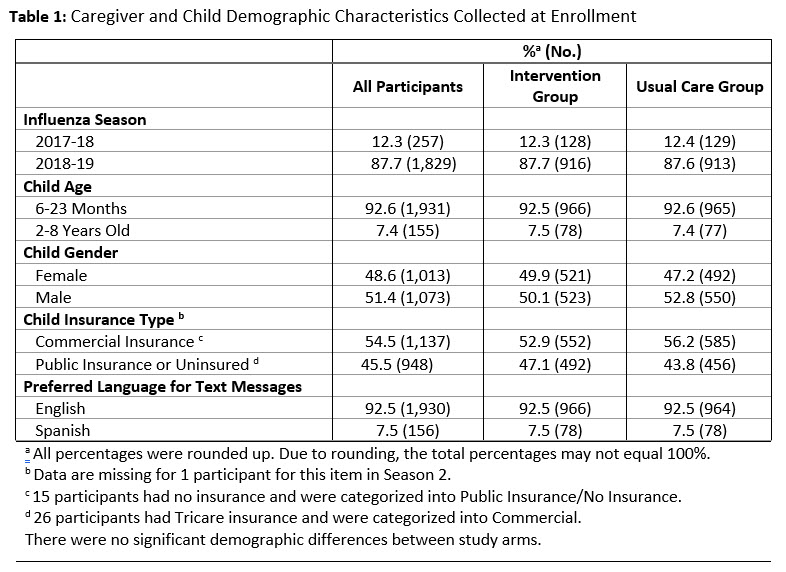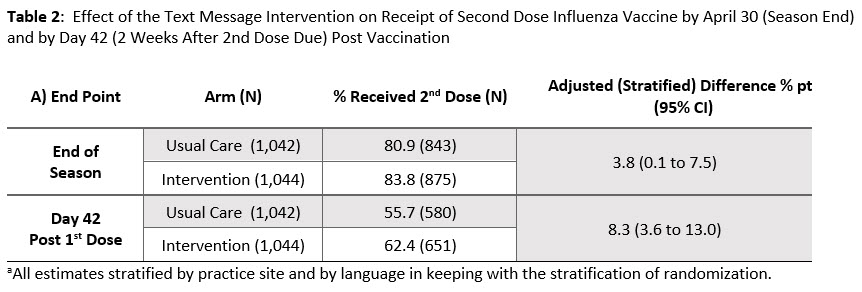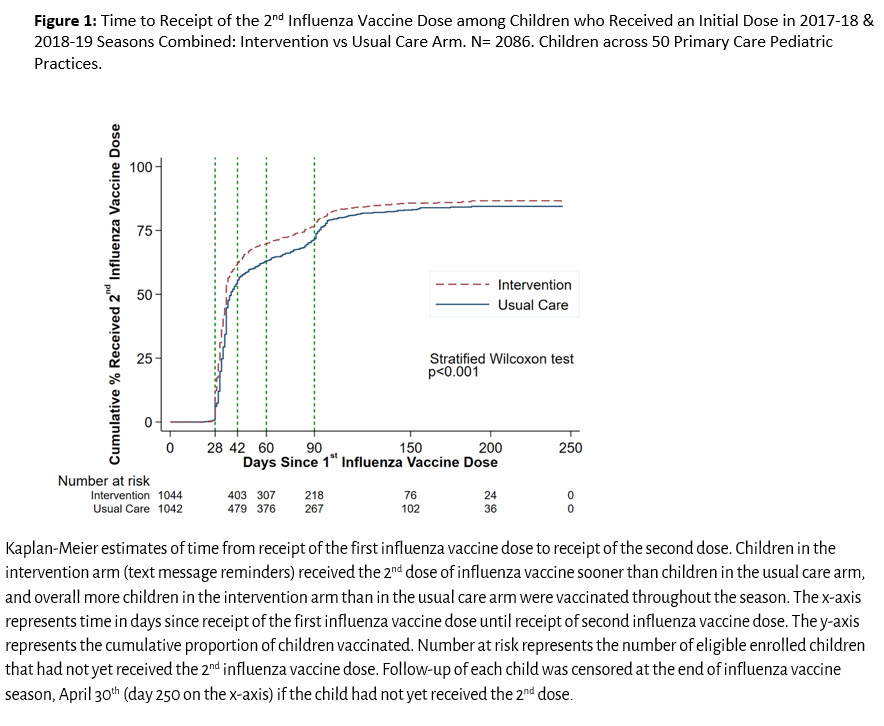Stockwell M, Shone L, Nekrasova E, Wynn C, Torres A, Griffith M, Localio R, Shults J, Unger R, Ware L, Kolff C, Harris D, Berrigan L, and Fiks A.
Presented at the 2021 Pediatric Academic Societies Annual Meeting
Background: Nationally, less than half of children in need of 2 influenza vaccine doses in a season receive both doses. Further, only half who receive both doses do so before influenza activity peaks. Few, if any, pediatric text message vaccine reminder studies have been conducted in diverse primary care practices nationally.
Objective: Compare the effectiveness of text message reminders with embedded interactive educational information vs. usual care on receipt and timeliness of the 2nd dose of influenza vaccine.
Design/Methods: In this NIH-funded RCT conducted in two influenza seasons (2017-18; 2018-19), caregivers of children who needed the 2nd influenza vaccine dose that season were recruited in 50 pediatric primary care offices across 26 states at the time of the 1st dose. Practices (28% Northeast, 36% South, 16% Midwest, 20% West) were from the AAP PROS practice-based research network. Children 6 months-8 years were randomized 1:1 into intervention vs. usual care, stratified by age (6-23 months, 2-8 years) and language (English, Spanish) within each practice. Intervention caregivers received automated, personalized text messages on days 14, 21, 25, 28, and 42 post-receipt of 1st dose, which included 2nd dose due date, office specific walk-in hours or phone number to make an appointment, and both static and interactive educational information including need for timely receipt of 2nd dose. Primary outcomes were receipt of 2nd dose by April 30 (season end) and by day 42 (2 weeks after 2nd dose due) assessed by Mantel Haenszel methods adjusted by practice and language, and timeliness of 2nd dose by Kaplan-Meier curves with log rank tests, stratified by practice site. All analyses were intention to treat.
Results: Overall, 2086 dyads enrolled; most children were age 6-23 months, half were publicly insured, and most caregivers preferred messages in English (Table 1). Intervention children were more likely to receive a 2nd dose by the end of the season (83.8% vs. 80.9%; adjusted risk difference (ARD) 3.8%; 95%CI [0.1 to 7.5]) and by day 42 (62.4% vs. 55.7%; (ARD) 8.3%; 95%CI [3.6, 13.0])(Table 2). Kaplan-Meier curves demonstrated more timely vaccination (Figure 1).
Conclusions: In this multi-state trial, text message reminders were effective in promoting increased and more timely delivery of the 2nd dose of influenza vaccine.



Last Updated
07/19/2021
Source
American Academy of Pediatrics